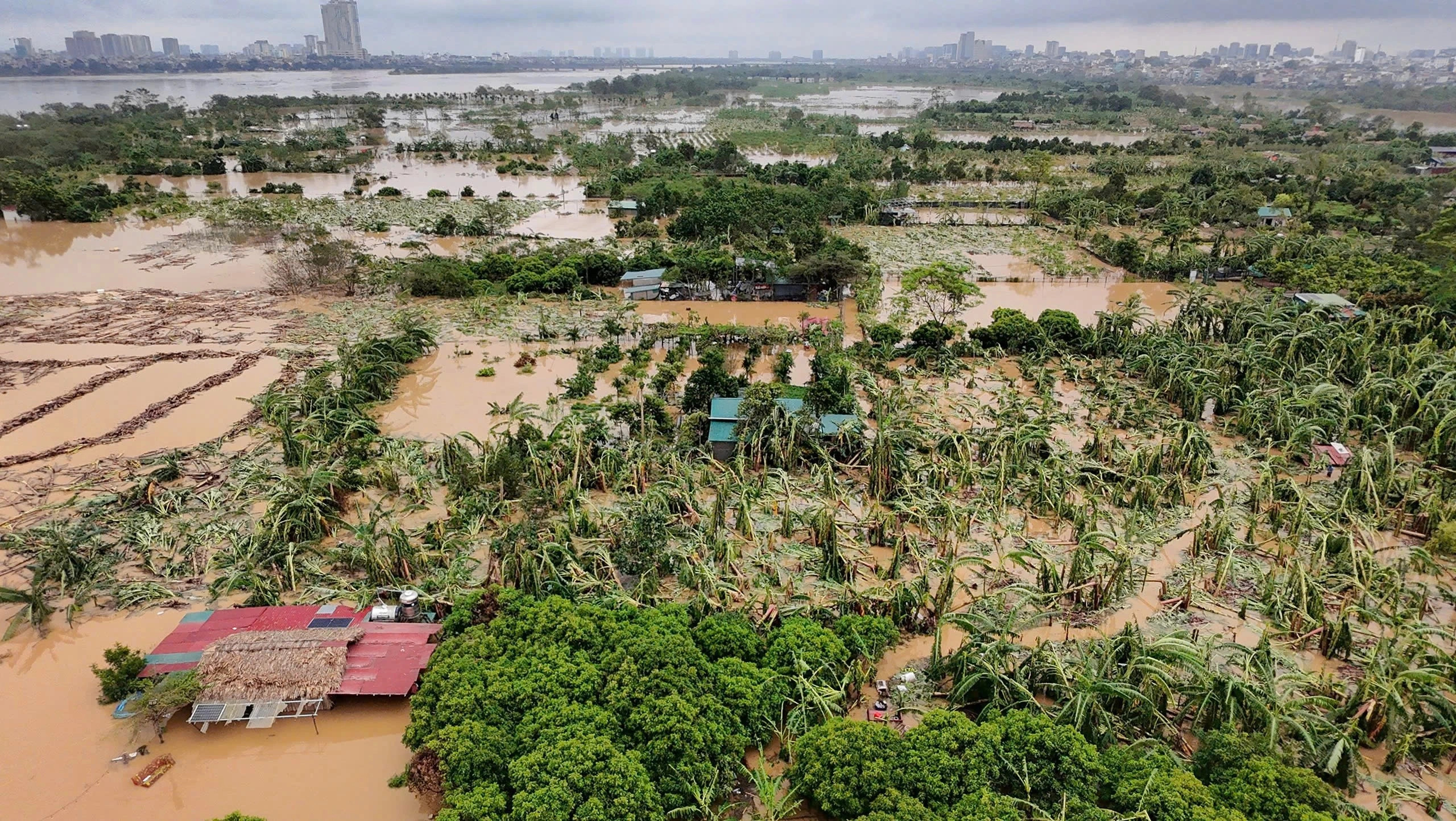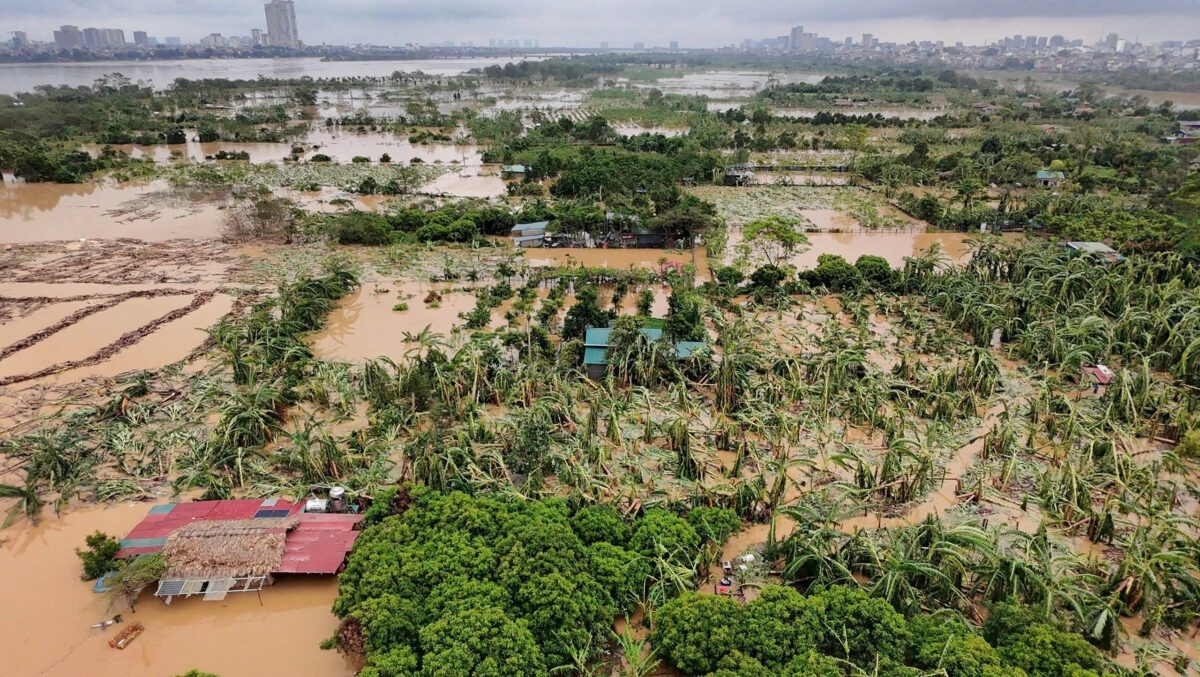Southeast Asia Faces Unusually Heavy Rainfall
Meteorologists have warned that Southeast Asia, including Vietnam, is bracing for severe weather conditions due to the La Nina phenomenon. This extreme weather event causes unusual cooling of the surface waters in the central and eastern tropical Pacific Ocean, often leading to floods and droughts in many parts of the world.
This phenomenon is predicted to threaten the agricultural, tourism, and industrial sectors, which have already been disrupted by a series of storms this year. According to Bloomberg, from the Philippines to Vietnam, there will be unusually heavy rainfall from now until November. Specifically, La Nina has been pushing warm water towards the western Pacific Ocean, leading to humid weather and more rainfall in the region.
Vietnam is also forecast to experience more tropical storms than usual from now until April next year, with risks of floods and landslides.

Typhoon Yagi made landfall in Northern Vietnam. (Photo: Tran Cuong)
Meanwhile, the Philippines is facing a double challenge. The country has yet to fully recover from a series of three powerful storms and is now preparing for an even more severe rainy season. Rainfall in the Philippines is expected to be up to 160% above average in January next year. Meanwhile, Singapore has also issued flood warnings in mid-October due to extreme weather.
Vietnam is struggling to recover from the severe damage caused by Typhoon Yagi. This storm has left deep wounds on the country. In addition to casualties and property damage, Yagi has severely affected infrastructure, agriculture, and many other economic sectors, causing numerous difficulties for the people.
A similar situation is occurring in neighboring Thailand, which is facing losses of up to 30 billion baht due to floods in the north, including Chiang Mai.
The appearance of unusually heavy rainfall at the end of 2024 in Southeast Asia, especially Vietnam, is a clear warning of the impacts of climate change. Timely response to this weather phenomenon is an urgent task not only for government agencies but also for every individual. Actions to take:
- Raise awareness of natural disasters: Follow weather forecasts closely and follow the guidance of authorities in case of natural disasters.
- Participate in environmental protection activities: Plant trees in and around living areas and do not litter to reduce the risk of pollution and landslides.
- Support the community: Help and support those around you during natural disasters.
Source: VTV








